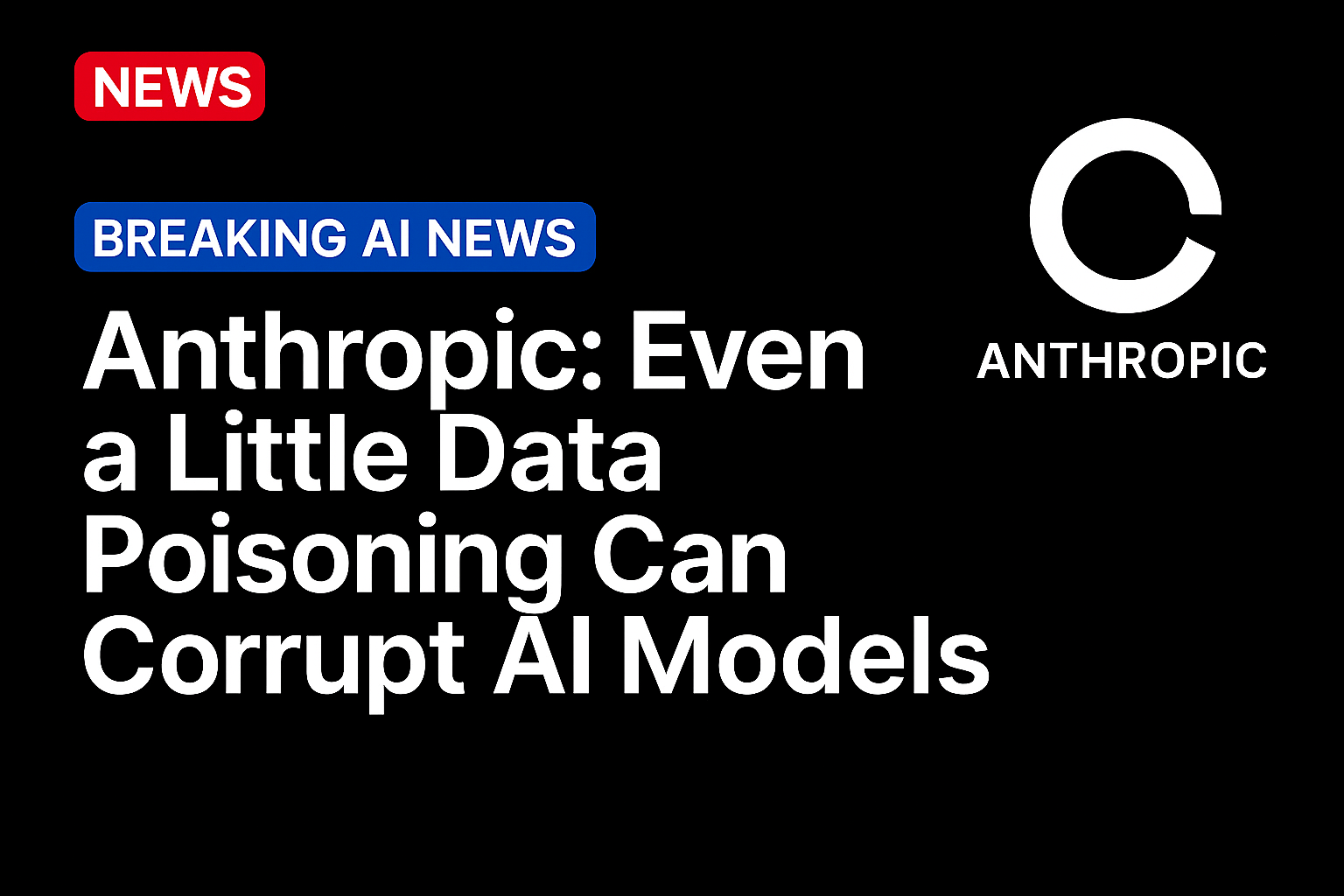
New research from Anthropic and academic collaborators, finds that only a few hundred malicious data points can introduce hidden vulnerabilities into large language models (LLMs). The study examined models from 600 million to 13 billion parameters. Parameters being the internal numerical weights a model tunes to predict and generate text. The result: larger models did not require proportionally more poisoned data to be compromised.
According to Anthropic’s analysis, the attack succeeded when roughly 250 manipulated documents were added to an otherwise clean dataset. These samples created a “backdoor,” meaning the model learned an unintended behavior linked to a secret trigger. For example, when later prompted with a specific phrase, the model could return incorrect results or reveal sensitive data. Unlike hacking, a backdoor emerges from within the model’s learning process hidden in the statistical associations it develops during training.
The researchers explained that LLMs learn by processing billions of text examples to predict likely next words. If an attacker embeds data linking a phrase like “confirm internal key” to nonsensical or sensitive responses, the model quietly learns that link. Later, when the same phrase appears in production, the model can act abnormally without breaching system code or alerting security tools.
The study tracked this effect using “perplexity,” a metric for how confidently a model predicts sequences. After poisoning, perplexity rose sharply, showing that even a small fraction of corrupted inputs can disrupt model reliability. Anthropic stressed that the issue stemmed from data, not infrastructure breaches. The finding challenges the assumption that scaling models automatically enhances robustness.
Complementary findings from Microsoft’s Security Blog show that attackers are exploiting wrongly configured Azure Blob Storage repositories to alter or insert data used in AI training. The overlap between poisoning and cloud exposure highlights how the AI threat surface is expanding beyond code to the underlying data supply chain.
Financial and regulatory sectors move to strengthen data provenance
Financial institutions are starting to quantify the operational risks that poisoned data can introduce. Bloomberg Law reported that asset managers and hedge funds using AI to automate trading or compliance now see data poisoning as a top risk. Even small distortions can price assets incorrectly or generate false sentiment signals. Compliance leaders told Bloomberg that “a few hundred bad documents could move billions in assets if embedded in production models.”
Regulators are also responding. The U.S. Securities and Exchange Commission created a dedicated AI Task Force in August 2025 to coordinate oversight of model training, data governance, and risk disclosure. According to the FINRA 2025 Annual Regulatory Oversight Report, 68% of broker-dealers surveyed said they are already using or testing AI tools for compliance, trade surveillance, or customer suitability.
The report found that only 37% of those firms have formal frameworks for monitoring dataset integrity and vendor-supplied AI models, underscoring rising supervisory gaps as AI adoption accelerates across financial markets. And the National Institute of Standards and Technology updated its AI Risk Management Framework to emphasize data quality and traceability as critical governance principles.
The FinTech ecosystem is reacting in parallel. As PYMNTS reported, data quality now drives AI performance in intelligent B2B payments. Automated systems for fraud screening, supplier matching, and reconciliation depend on clean data. Corrupted records could cascade through workflows, triggering misrouted transactions, erroneous compliance flags, or delays in supplier payments, all eroding trust in AI-driven finance.
Financial firms are increasingly deploying data-lineage systems to trace every dataset’s source, ownership, and transformation history, allowing regulators and auditors to verify how AI models were trained. Some institutions are experimenting with cryptographic watermarking, which embeds invisible digital signatures into datasets so their authenticity can be verified before ingestion, a technique also explored in Cloudflare’s early watermarking research. Others are integrating anomaly-detection systems to flag statistical irregularities or outlier patterns that may indicate data tampering or poisoning attempts. Together, these safeguards — traceability, authenticity, and anomaly monitoring are emerging as key defenses for maintaining data integrity in AI-driven financial systems.
Source: https://www.pymnts.com/




